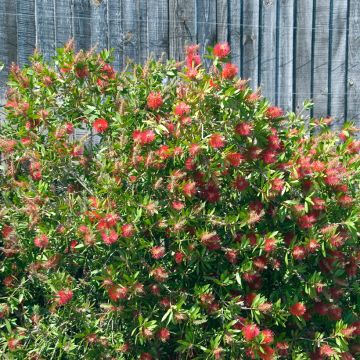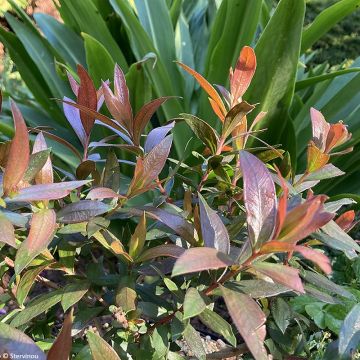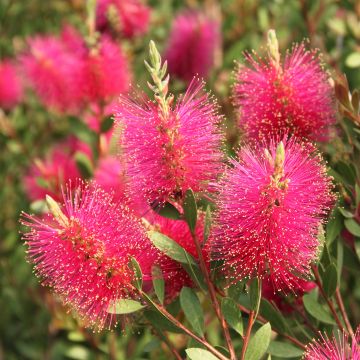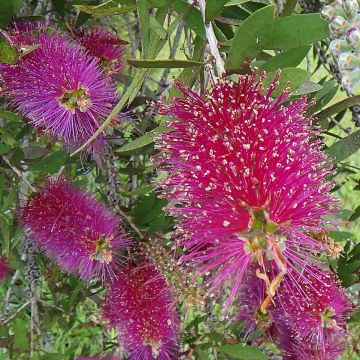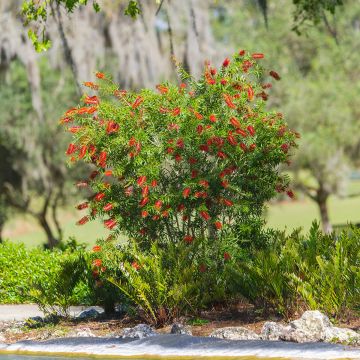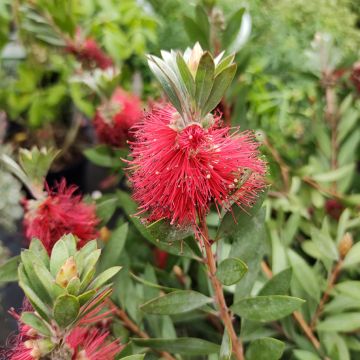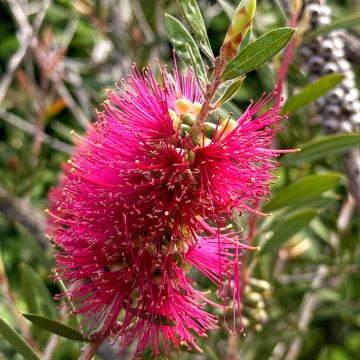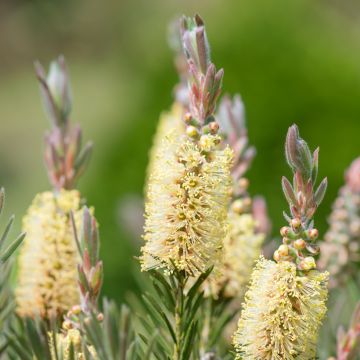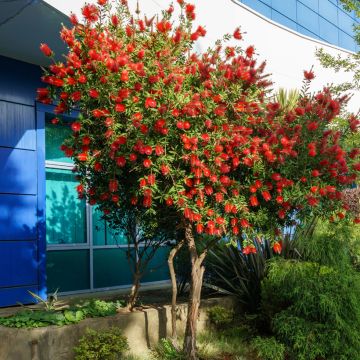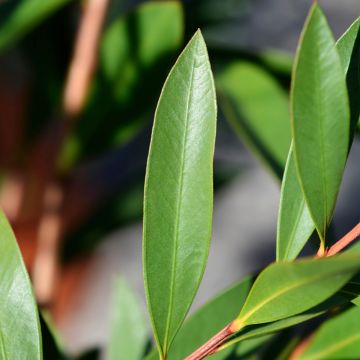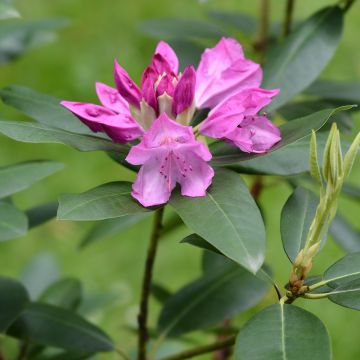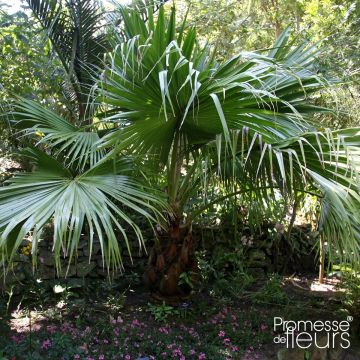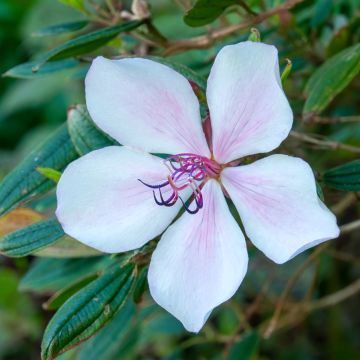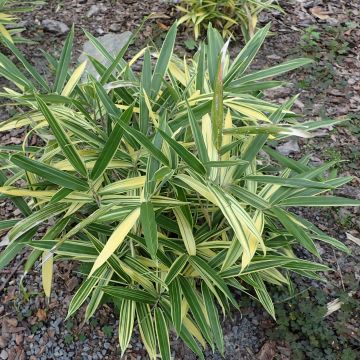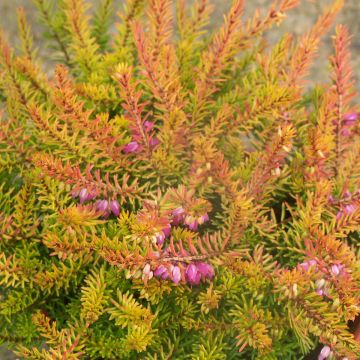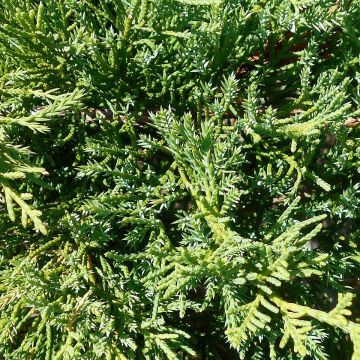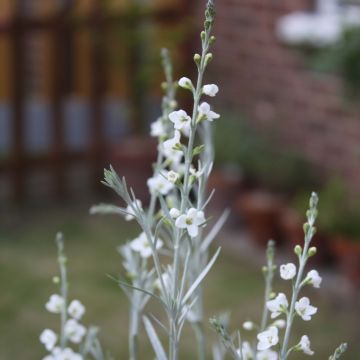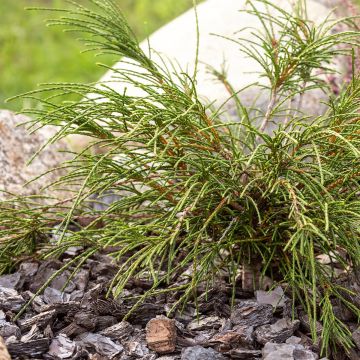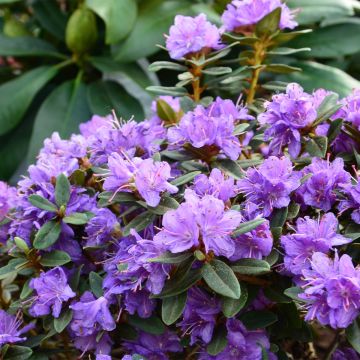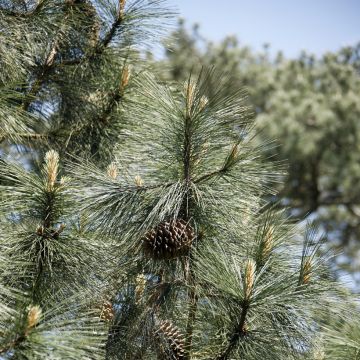

Callistemon laevis - Bottlebrush


Callistemon laevis - Bottlebrush


Callistemon laevis - Bottlebrush


Callistemon laevis - Bottlebrush


Callistemon laevis - Bottlebrush
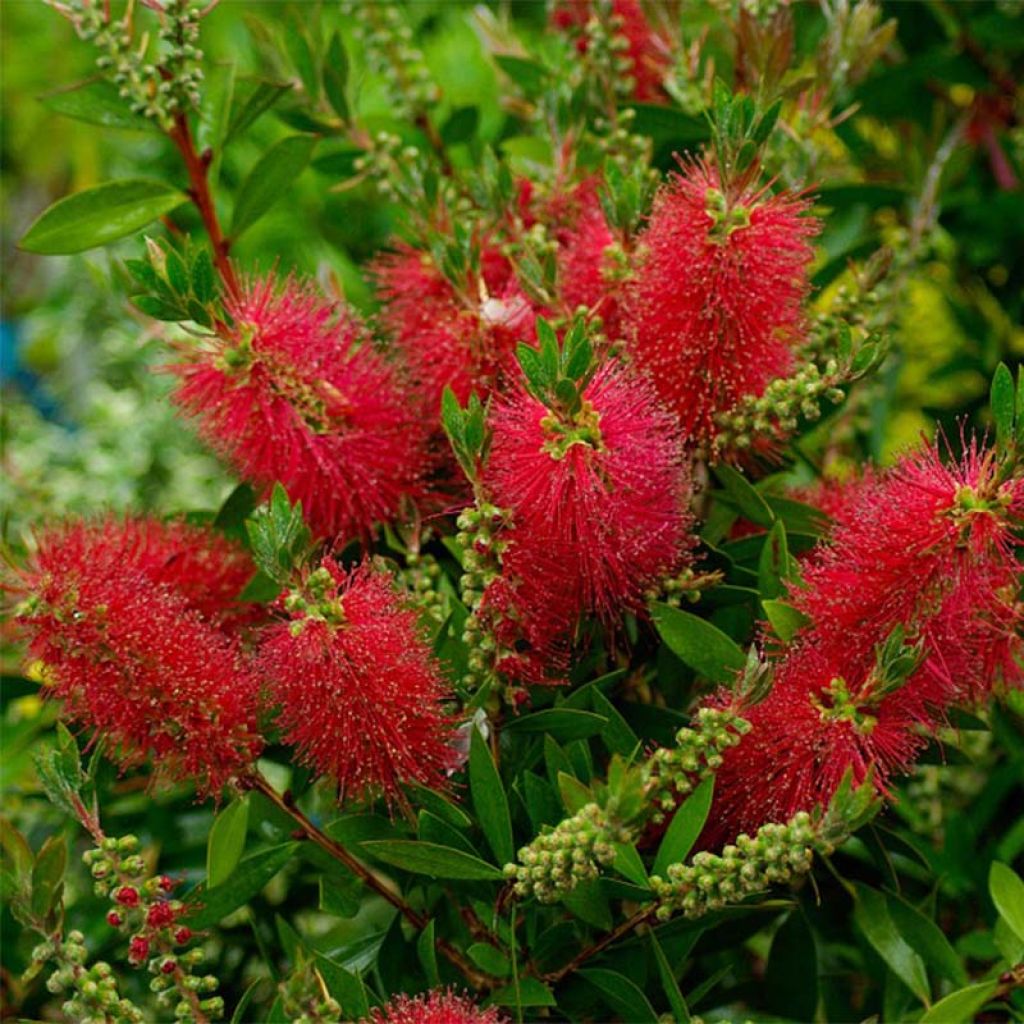

Callistemon laevis - Bottlebrush
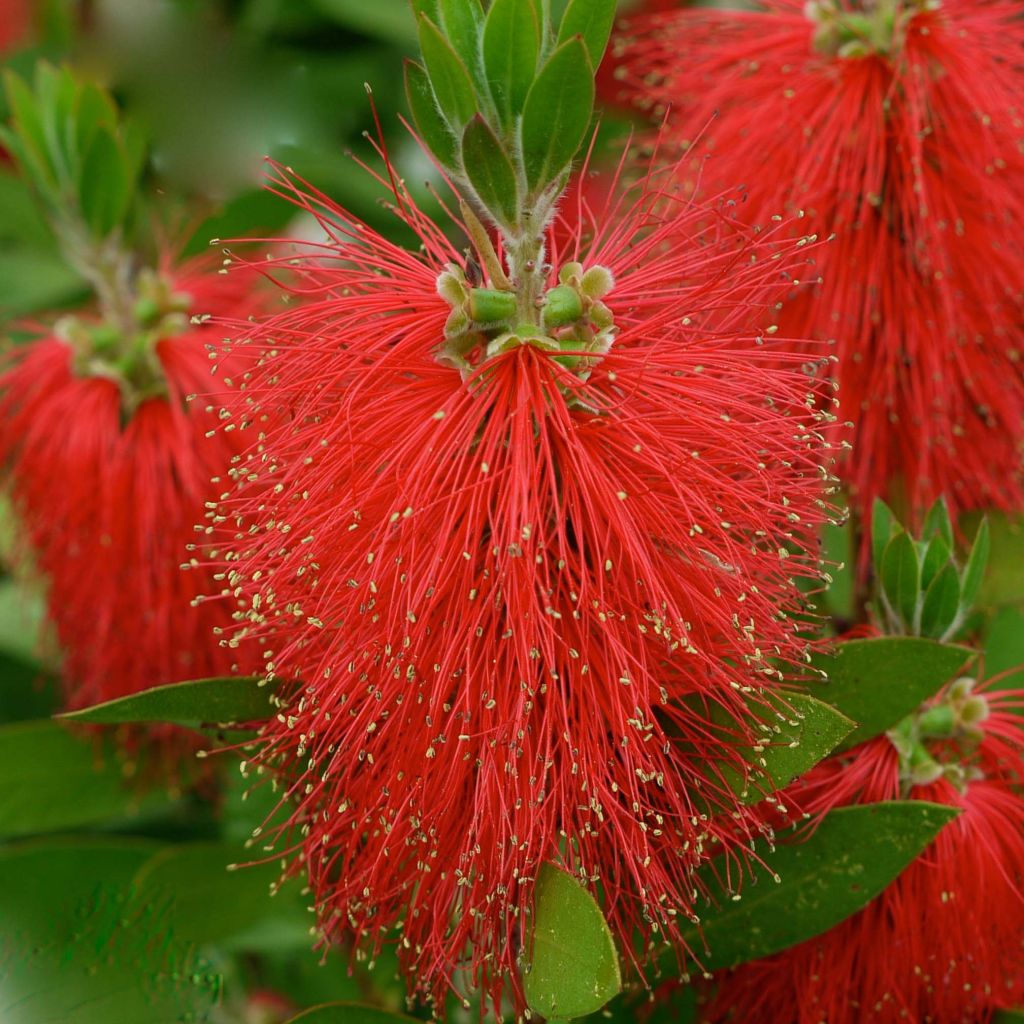

Callistemon laevis - Bottlebrush
Callistemon laevis - Bottlebrush
Callistemon x laevis
Smooth Bottlebrush, Crimson Bottlebrush
This item cannot be shipped to the selected country
Delivery charge from €5.90
Delivery charge from €5.90
Delivery to Corse prohibited
More information
Schedule delivery date,
and select date in basket
This plant carries a 24 months recovery warranty
More information
We guarantee the quality of our plants for a full growing cycle, and will replace at our expense any plant that fails to recover under normal climatic and planting conditions.
From €5.90 for pickup delivery and €6.90 for home delivery
Express home delivery from €8.90.
From €5.90 for pickup delivery and €6.90 for home delivery
Express home delivery from €8.90.
Delivery to Corse prohibited: UE law prohibits the import of this plant from mainland France to Corse as part of the fight against Xylella fastidiosa. Please accept our sincere apologies.
More information

Does this plant fit my garden?
Set up your Plantfit profile →
Description
Callistemon laevis is a variety of bottlebrush, probably of horticultural origin, which is among the most popular. It is indeed this bush, with a beautiful bushy habit and a particularly perpetual flowering, that made Australian shrubs known and appreciated in France a few years ago. It is appreciated for its dazzling flowering in almost fluorescent red brushes on light green foliage, which invariably follows its young shoots tinged with red, up to 4 times a year from April to September. Its origins, somewhat despised by purists, do not matter: its triumphant beauty shines in a large pot on the terrace, in well-amended and watered soil, or in the centre of an exotic bed in mild climates.
Callistemon laevis is an evergreen bush of the myrtle family, cousin of myrtles and Leptospermum, whose origins are lost in Australia. Callistemons are mostly riverside plants that appreciate well-drained soils, without excess limestone, and occasionally even dry soils, as well as abundant and occasional watering to support their flowering.
It is a bush of mild climates, with brittle wood, forming a rounded and slightly spreading bush, composed of flexible branches. Its growth is rather fast, reaching a height of 1.80m (5ft 11in) and a width of 1.50m (4ft 11in) at maturity, if not pruned by the cold. Its linear and narrow foliage is divided into 5cm (2in) long and 1cm (0.4in) wide leaflets. They are tinged with salmon red when they first emerge, become light green, and then turn bright green. The young leaves produced at the end of summer retain their reddish-orange colour throughout the winter. Its inflorescences appear at the end of the branches, just above the young leaves. They are composed of very long stamens of a very bright red, taking on a more magenta colour as the days go by, and are gathered in cylindrical spikes. These inflorescences are about 5cm (2in) wide and 7cm (2.8in) long, and hang slightly. The terminal bud repeatedly develops new leaves, then new brushes, while the old inflorescence produces small, very hard cup-shaped fruits embedded in the bark. The flowering can be renewed several times during the season in cool soil and warm climate, especially in late summer. It is also a honey and nectar plant that attracts many pollinating insects to the garden.
Hardy to about -5°C/-6°C, Callistemon laevis withstands summer drought quite well once well established, but appreciates water in dry climates. In a greenhouse or conservatory, it will create an extremely decorative quartet with an orange tree, a Tibouchina or a Mimosa, evoking landscapes with exotic charm and scents. In mild climates, especially on the Mediterranean coast or in the south of the Atlantic coast of our country, it can be used as a standalone plant - it deserves it - in the center of a bed, or as a free hedge, associated with Grevillea, Caesalpinia gillesii, Leptospermum, Melaleuca. It can also be planted in an evergreen hedge, accompanied by a shrubby Ceanothus ('Italian Skies', 'Concha', 'Puget Blue', 'Skylark'...), a spring-flowering broom, or Oleanders (Nerium oleander 'Soleil Levant' or 'Provence'). Its good tolerance to salt allows for coastal exposure, facing the wind and salt spray.
Report an error about the product description
Callistemon laevis - Bottlebrush in pictures
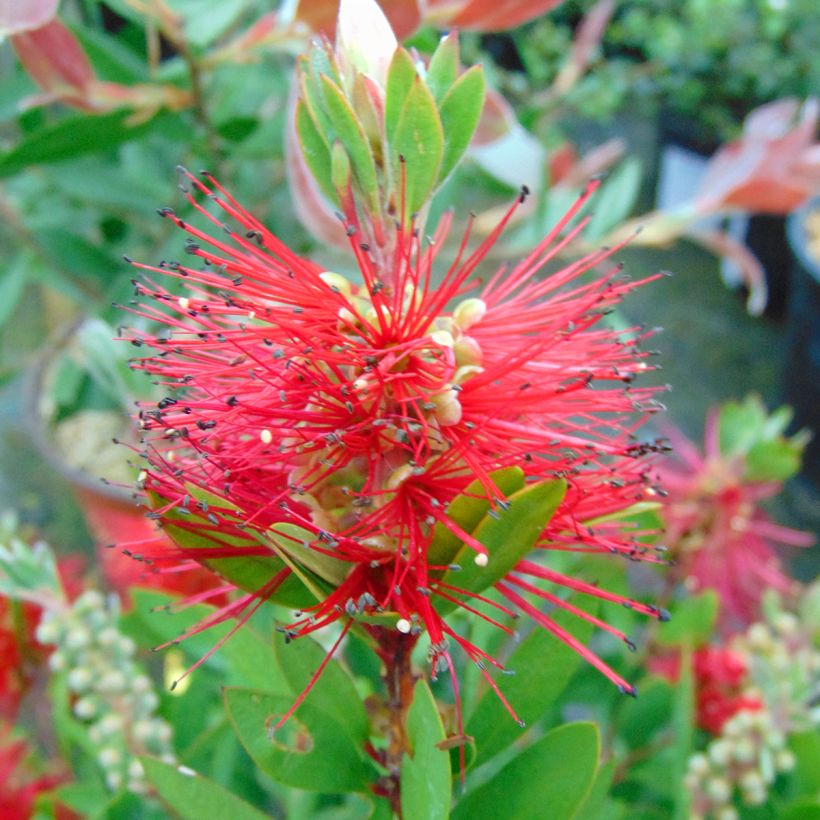

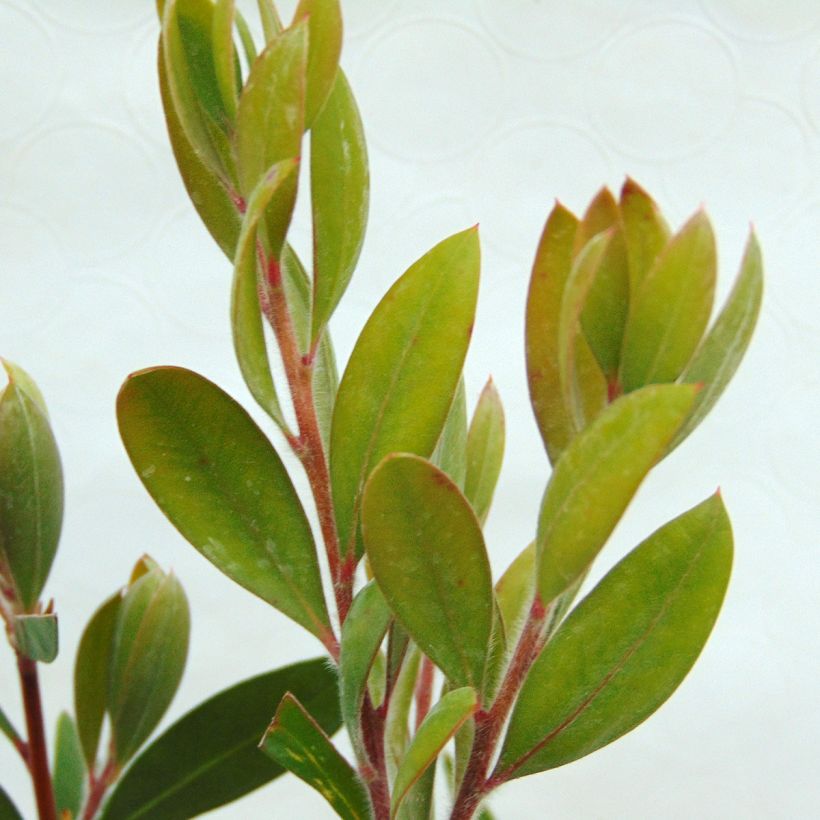



Plant habit
Flowering
Foliage
Botanical data
Callistemon
x laevis
Myrtaceae
Smooth Bottlebrush, Crimson Bottlebrush
Cultivar or hybrid
Other Callistemon
Planting and care
Callistemon laevis can be planted in spring or early autumn in a very mild climate. It will thrive in a light, well-drained, fertile soil that is moist to dry in summer, even though it greatly appreciates regular watering to support its beautiful flowering. A loose soil, whether humus-rich, slightly rocky or sandy, slightly acidic or neutral, will do the trick. If your soil tends to be chalky, it is necessary to dig a hole and fill it with a mixture of heather soil, compost, coarse sand, and garden soil. Treat with an anti-chlorosis product (sequestrine) if you notice abnormal yellowing of the leaves. It tolerates sea spray and drought, although drought will affect its floribundity. A Callistemon should never show signs of dehydration; if this is the case, it will struggle to recover. It will thrive in full sun and will appreciate warm roots. Under these conditions, it is hardy down to -5 or -6°C (23 or 21.2 °F) and can live for many years. Surround it with winter protection in colder regions, and insulate it as much as possible from the cold. Plant it in the warmest corner of the garden, in full sun against a south-facing wall. However, it will be necessary, in our regions further from the sea, to cultivate it in a large pot and store it indoors during winter in a bright, but unheated, space.
Container cultivation:
Ensure good drainage in the bottom of the pot, which should be large. Use a lightweight substrate, enriched with leaf compost, and apply slow-release fertilizer in late winter and autumn. Water generously in summer, allowing the soil to dry out slightly between waterings. The more you water, the more your Callistemon will flower.
Propagation by seed sowing in autumn. The seeds retain their viability for 3 years. To release the seeds, which are as fine as dust, from their hard shells, simply pass them quickly over a candle flame, for example. The shells will burst under the heat, releasing the seeds. Be sure to place a cloth or piece of paper on your work surface to collect the seeds.
Propagation by semi-hardwood stem cuttings in autumn or spring is also possible.
Planting period
Intended location
Care
-
, onOrder confirmed
Reply from on Promesse de fleurs
Evergreen shrubs
Haven't found what you were looking for?
Hardiness is the lowest winter temperature a plant can endure without suffering serious damage or even dying. However, hardiness is affected by location (a sheltered area, such as a patio), protection (winter cover) and soil type (hardiness is improved by well-drained soil).

Photo Sharing Terms & Conditions
In order to encourage gardeners to interact and share their experiences, Promesse de fleurs offers various media enabling content to be uploaded onto its Site - in particular via the ‘Photo sharing’ module.
The User agrees to refrain from:
- Posting any content that is illegal, prejudicial, insulting, racist, inciteful to hatred, revisionist, contrary to public decency, that infringes on privacy or on the privacy rights of third parties, in particular the publicity rights of persons and goods, intellectual property rights, or the right to privacy.
- Submitting content on behalf of a third party;
- Impersonate the identity of a third party and/or publish any personal information about a third party;
In general, the User undertakes to refrain from any unethical behaviour.
All Content (in particular text, comments, files, images, photos, videos, creative works, etc.), which may be subject to property or intellectual property rights, image or other private rights, shall remain the property of the User, subject to the limited rights granted by the terms of the licence granted by Promesse de fleurs as stated below. Users are at liberty to publish or not to publish such Content on the Site, notably via the ‘Photo Sharing’ facility, and accept that this Content shall be made public and freely accessible, notably on the Internet.
Users further acknowledge, undertake to have ,and guarantee that they hold all necessary rights and permissions to publish such material on the Site, in particular with regard to the legislation in force pertaining to any privacy, property, intellectual property, image, or contractual rights, or rights of any other nature. By publishing such Content on the Site, Users acknowledge accepting full liability as publishers of the Content within the meaning of the law, and grant Promesse de fleurs, free of charge, an inclusive, worldwide licence for the said Content for the entire duration of its publication, including all reproduction, representation, up/downloading, displaying, performing, transmission, and storage rights.
Users also grant permission for their name to be linked to the Content and accept that this link may not always be made available.
By engaging in posting material, Users consent to their Content becoming automatically accessible on the Internet, in particular on other sites and/or blogs and/or web pages of the Promesse de fleurs site, including in particular social pages and the Promesse de fleurs catalogue.
Users may secure the removal of entrusted content free of charge by issuing a simple request via our contact form.
The flowering period indicated on our website applies to countries and regions located in USDA zone 8 (France, the United Kingdom, Ireland, the Netherlands, etc.)
It will vary according to where you live:
- In zones 9 to 10 (Italy, Spain, Greece, etc.), flowering will occur about 2 to 4 weeks earlier.
- In zones 6 to 7 (Germany, Poland, Slovenia, and lower mountainous regions), flowering will be delayed by 2 to 3 weeks.
- In zone 5 (Central Europe, Scandinavia), blooming will be delayed by 3 to 5 weeks.
In temperate climates, pruning of spring-flowering shrubs (forsythia, spireas, etc.) should be done just after flowering.
Pruning of summer-flowering shrubs (Indian Lilac, Perovskia, etc.) can be done in winter or spring.
In cold regions as well as with frost-sensitive plants, avoid pruning too early when severe frosts may still occur.
The planting period indicated on our website applies to countries and regions located in USDA zone 8 (France, United Kingdom, Ireland, Netherlands).
It will vary according to where you live:
- In Mediterranean zones (Marseille, Madrid, Milan, etc.), autumn and winter are the best planting periods.
- In continental zones (Strasbourg, Munich, Vienna, etc.), delay planting by 2 to 3 weeks in spring and bring it forward by 2 to 4 weeks in autumn.
- In mountainous regions (the Alps, Pyrenees, Carpathians, etc.), it is best to plant in late spring (May-June) or late summer (August-September).
The harvesting period indicated on our website applies to countries and regions in USDA zone 8 (France, England, Ireland, the Netherlands).
In colder areas (Scandinavia, Poland, Austria...) fruit and vegetable harvests are likely to be delayed by 3-4 weeks.
In warmer areas (Italy, Spain, Greece, etc.), harvesting will probably take place earlier, depending on weather conditions.
The sowing periods indicated on our website apply to countries and regions within USDA Zone 8 (France, UK, Ireland, Netherlands).
In colder areas (Scandinavia, Poland, Austria...), delay any outdoor sowing by 3-4 weeks, or sow under glass.
In warmer climes (Italy, Spain, Greece, etc.), bring outdoor sowing forward by a few weeks.

































